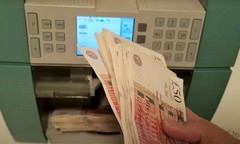Forex Trading Time: Master the Golden Moment and Win the Forex Market
The foreign exchange market is one of the largest financial markets in the world, running 24 hours a day, covering all time zones around the world. Although the market is open around the clock, not all time periods are suitable for trading. Mastering the rules of foreign exchange trading time is a key step for every foreign exchange trader to succeed.
The timing of foreign exchange trading is closely related to the opening hours of markets in major economies around the world. The trading session of the foreign exchange market can be divided into three main parts: the Asian session, the European session and the American session. The level of trading activity, market volatility and trading strategies vary from session to session. For example, the Asian session is usually dominated by light trading volume, suitable for novices to simulate trading and strategy testing, while the European session is the most active period of the market, with high trading volume and high volatility, suitable for experienced traders to operate in the short term.

Understanding the market characteristics of different time periods can help traders better grasp trading opportunities. For example, at the opening of the European session, the market tends to experience large fluctuations due to the overlap of European and American markets, which is why many traders choose to trade during this time period. The opening and closing of the American session are also often accompanied by violent market volatility, especially when important economic data such as the Fed's interest rate decision are released, and traders need to be particularly alert to market risks.
Reasonable arrangement of personal trading time is the cornerstone of successful trading. Every trader has his own pace of life and trading habits, so you need to choose the most suitable trading session according to your situation. For example, if you are a free trader during the day, you can choose the European session to trade; if you are a night owl, you can choose the American session to operate. No matter which time period you choose, you need to be disciplined and strictly implement your trading plan to avoid unnecessary losses due to emotional trading.
The arrangement of foreign exchange trading time is an important link that cannot be ignored in foreign exchange trading. Only by fully understanding and making reasonable use of trading time can we be invincible in the foreign exchange market.
In Forex trading, market volatility is one of the focuses of traders. Market volatility at different time periods not only affects the choice of trading strategy, but also directly affects trading results. Therefore, mastering the relationship between foreign exchange trading time and market fluctuations is a must-have skill for every trader.
Market volatility is closely related to the release of economic data. For example, when important economic data such as US non-farm payrolls data and the Fed's interest rate decision are released, the market tends to experience extreme volatility. These data are usually published at fixed times, so traders need to know in advance and pay close attention to these points in time. For example, the Fed's interest rate decision is usually released every Wednesday afternoon, while the US non-agricultural employment data is released on the first Friday of each month. These points in time are often "critical moments" in the foreign exchange market, and traders need to pay special attention to risk management to avoid losses due to extreme market fluctuations.
Market volatility is also related to the overlap of trading sessions. For example, when the European and American sessions overlap, the market tends to usher in higher trading volumes and greater volatility. This is because traders in both major markets are active in the market at the same time, driving sharp fluctuations in prices. On the contrary, when the market is in a light period, the trading volume is low and the price fluctuation is relatively small, which is suitable for long-term trading or arbitrage operation.
Market sentiment also affects the volatility of Forex trading hours. For example, when the global economic situation is tight, the market is usually more volatile and traders need to be more cautious. In the global economic recovery, market volatility is relatively small, suitable for sound trading operations. Therefore, traders need to pay close attention to global economic dynamics and changes in market sentiment, and adjust their trading strategies reasonably.
Developing a scientific trading plan is the key to successful Forex trading. No matter how the market fluctuates, traders need to strictly follow the plan and avoid deviating from the original strategy due to market sentiment or short-term fluctuations. The trading plan also needs to be adjusted to different trading sessions, such as short-term trading during high volatility and long-term trading during low volatility.
Foreign exchange trading hours are closely related to market fluctuations. Only by fully understanding and reasonably responding to these changes can we achieve stable profits in the foreign exchange market. Both novice and experienced traders need to keep learning and practicing in order to be comfortable in Forex trading.

























